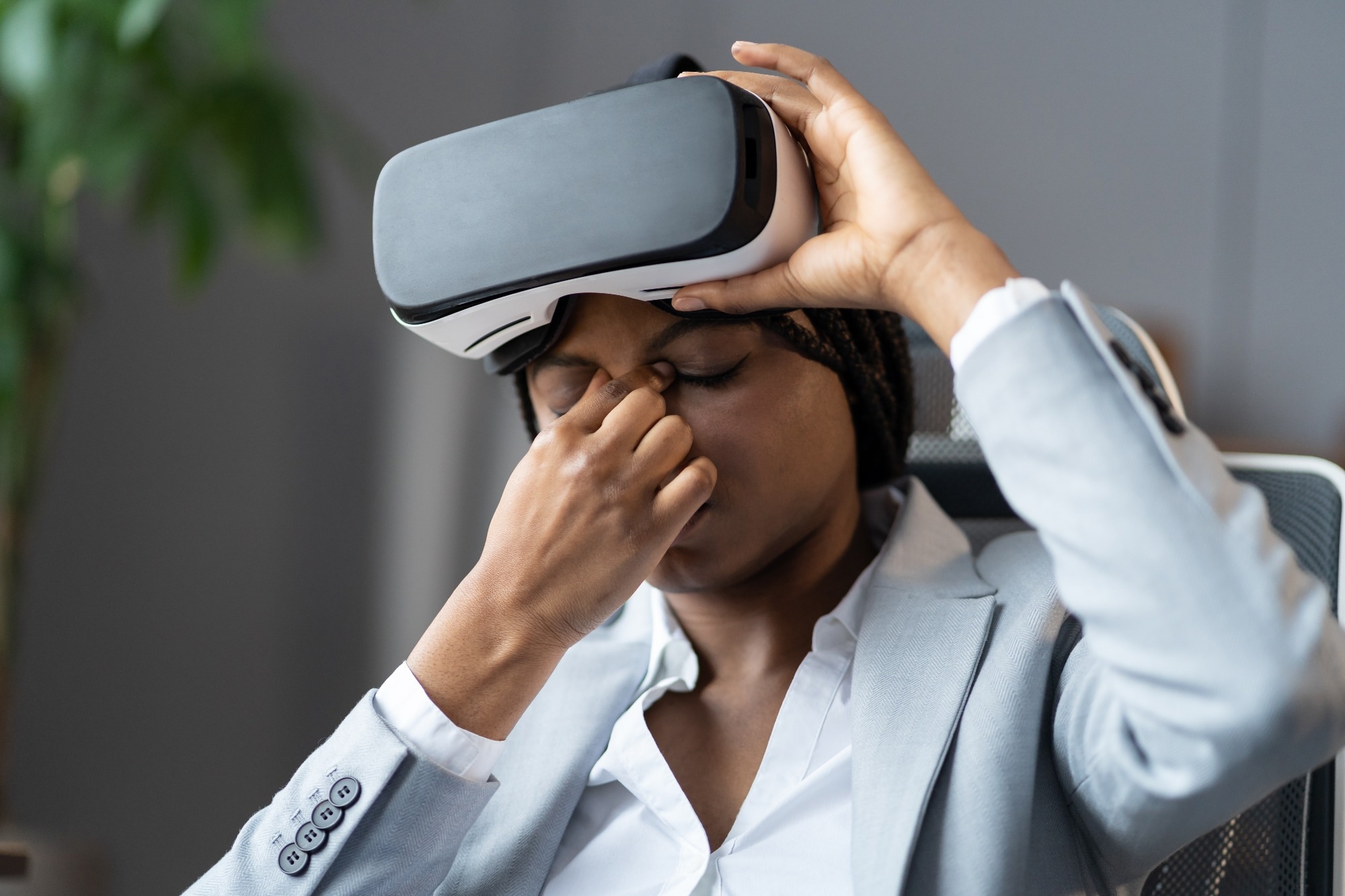A new real-time imaging study reveals that VR gaming rapidly reshapes the eye’s protective tear layer, raising its temperature and thickening its lipid film. However, overall tear stability and symptoms remain unchanged.
 Study: Time-course observation of tear film dynamics during VR headset use. Image credit: DimaBerlin/Shutterstock.com
Study: Time-course observation of tear film dynamics during VR headset use. Image credit: DimaBerlin/Shutterstock.com
A new study published in Scientific Reports demonstrates real-time changes in tear film dynamics during a virtual reality (VR) game session. However, no improvements in dry eye symptoms were detected, and the authors caution that structural changes alone do not necessarily indicate improved tear film stability.
How VR strains the eyes
Dry eye disease is a very common eye condition characterized by tear film instability and fragmentation. Prolonged use of visual display, which reduces eye blink rate and increases aqueous tear evaporation from the eye surface, significantly contributes to dry eye disease development. The condition is associated with eye discomfort and visual impairment.
A rapid and exponential global growth of the VR gaming market in recent years has raised concerns about ocular safety, as users of VR headsets must continuously focus on dynamic screen images from a very short viewing distance. This type of visual process can potentially affect tear film stability.
The tear film consists of three distinct layers: inner mucin, middle aqueous, and outer lipid layers, which collectively help protect the eye and maintain clear vision. Existing evidence suggests that the use of VR headsets is associated with reduced blink rates and increased eye discomfort. However, some studies have also reported an improvement in tear film stability after VR use.
Given the uncertainty in previous findings and considering the potential impact of VR use on eye health, researchers developed a novel VR system that uses an ultra-compact camera for real-time monitoring of tear film dynamics during VR gaming sessions.
The study involved a total of 14 healthy individuals who participated in a 30-minute VR game session. The tear film dynamics were recorded at baseline and every five minutes during the gaming session. Since the tear film lipid layer plays a critical role in preventing aqueous tear evaporation, the study primarily focused on assessing the thickness and quality of the tear film lipid layer and tear film stability.
How tear films respond to VR
The analysis of tear film dynamics revealed a significant increase in lipid layer thickness and a significantly elevated corneal and upper eyelid surface temperature after the VR game session. Existing evidence in this research field links the use of VR headsets with increased lipid layer thickness and enhanced tear film stability, supporting the current study's findings.
Elevated eye temperature, as observed in this study, is known to increase the fluidity of nonpolar lipids in the tear film lipid layer, which in turn can promote the reorganization of the tear film lipid layer by facilitating the incorporation of polar lipids into the nonpolar lipid layer. All these changes may contribute to the thickening of the lipid layer.
During the 30-minute VR game session, a significant increase in lipid layer thickness was observed after 20 minutes of gameplay. No further increase was observed beyond this time point. This suggests that the elevated eye temperature during these 20 minutes facilitated the lipid layer to achieve a new structural steady state, beyond which no significant structural changes occurred.
Existing evidence suggests that elevated environmental temperatures, which mediate thickening of the tear film lipid layer, are associated with improved tear film stability. However, no significant changes in tear film stability-related parameters were found, despite the thickening of the lipid layer.
The researchers argue that the absence of change in other parameters may be due to the unchanged thickness of the aqueous sublayer located directly below the lipid layer, which is linearly correlated with tear volume.
In a separate section of the study, tear film dynamics were compared between contact lens wearers and non-contact lens wearers. The findings revealed that lipid layer thickening started after 15 minutes of VR use in non-contact lens wearers, and after 25 minutes in contact lens wearers. These findings suggest that changes in lipid layer dynamics due to VR use may be influenced by prior use of contact lenses.
Overall, the study findings suggest that the use of a VR headset may promote lipid layer thickening through a localized increase in eye temperature. However, this did not translate into detectable improvements in tear film stability or symptom reduction.
Why the results are cautioned
Since the study involved only healthy individuals, it remains unclear whether the observed changes apply to individuals with eye complications, such as dry eye disease or meibomian gland dysfunction. This limitation restricts the generalizability of the findings and highlights the need for further research involving clinical populations.
Furthermore, the study's findings may be influenced by potential confounding factors, as it lacks appropriate control groups. Future studies should include appropriate control groups, such as participants with a non-VR headset or without any headset, to eliminate potential confounding factors, including ambient temperature and insulation effects.
Download your PDF copy now!